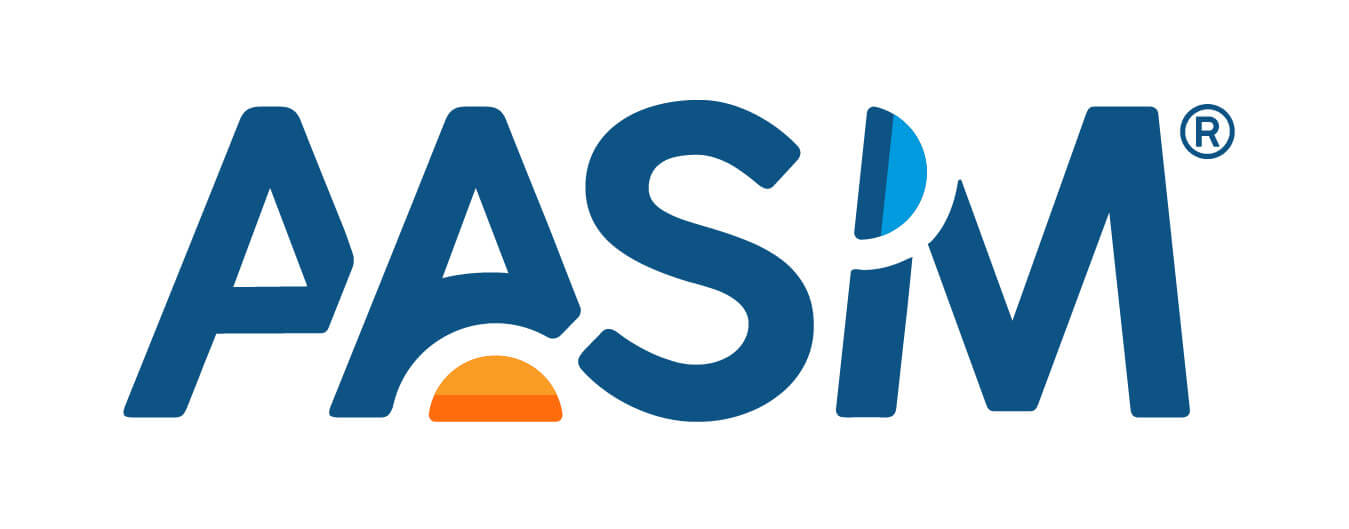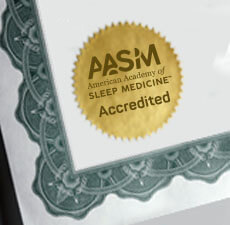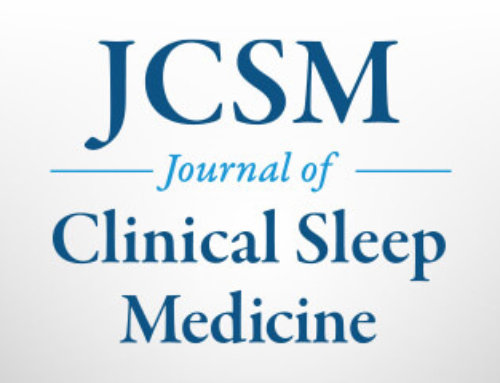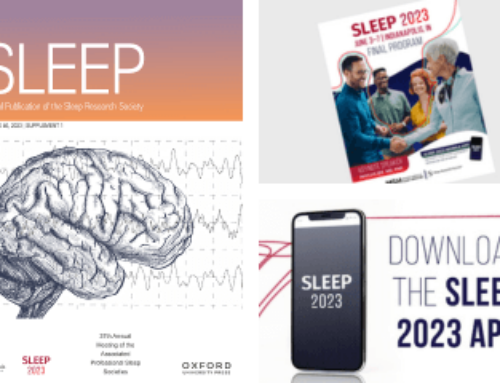WESTCHESTER, Ill. – A study published in the May 1 issue of the journal SLEEP is the first attempt to quantify the strength of the cross-sectional relationships between duration of sleep and obesity in both children and adults. Cross-sectional studies from around the world show a consistent increased risk of obesity among short sleepers in children and adults, the study found.
Francesco P. Cappuccio, MD, of Warwick Medical School in the United Kingdom, and colleagues performed a systematic search of publications on the relationship between short sleep duration and obesity risk. Criteria for inclusion were: report of duration of sleep as exposure, body mass index (BMI) as continuous outcome and prevalence of obesity as categorical outcome, number of participants, age and gender.
Of the 696 studies identified from the search, 12 studies on children and 17 studies on adults met the inclusion criteria.
For the children, 13 population samples from the 12 studies were included in the pool analysis, for a total of 30,002 participants from around the world. The subjects’ age ranged from two to 20 years. Seven of 11 studies reported a significant association between short sleep duration and obesity.
For the adults, 22 population samples from the 17 studies were included in the pool analysis, for a total of 604,509 worldwide participants. The subjects’ age ranged from 15-102 years. Seventeen population samples showed a significant association between short duration of sleep and obesity. Unlike studies in children, all studies in adults showed a consistent and significant negative association between hours of sleep and BMI.
According to Dr. Cappuccio, this study showed a consistent pattern of increased odds of being a short sleeper if you are obese, both in childhood and adulthood.
“By appraising the world literature, we were able to show some heterogeneity amongst studies in the world. However, there is a striking consistent overall association, in that both obese children and adults had a significantly increased risk of being short sleepers compared to normal weight individuals. The size of the association was comparable (1.89-fnew increase in children and 1.55-fnew increase in adults). This study is important as it confirms that this association is strong and might be of public health relevance. However, it also raises the unanswered question yet of whether this is a cause-effect association. Only prospective longitudinal studies will be able to address the outstanding question,” said Dr. Cappuccio.
While an increasing number of adults are considered overweight, the number of overweight children is also on the rise. According to the National Heart, Lung and Blood Institute, the percentage of overweight children and teens has more than doubled in the past 30 years. Today, about 17 percent of American children aged two to 19 are overweight. An estimated 61 percent of U.S. adults aged 20-74 years are either overweight or obese. About 34 percent of these people are overweight and 27 percent or 50 million people are obese. While eating healthy and exercising regularly are important precautions to take to reduce one’s chances of being overweight, getting enough sleep is equally as important.
Being overweight can lead to cardiovascular disease and type two diabetes, and can also increase the risk for developing obstructive sleep apnea (OSA), a sleep-related breathing disorder that causes your body to stop breathing during sleep. OSA, which can disturb your sleep numerous times on any given night, can result in daytime sleepiness, as well as elevate the risk for stroke, diabetes and heart disease. OSA is a serious sleep disorder that can be harmful, or even fatal, if left untreated. OSA occurs in about two percent of young children, four percent of men and two percent of women.
Snoring is a sound made in the upper airway of your throat as you sleep. It normally occurs as you breathe in air. It is a sign that your airway is being partially blocked. About one-half of people who snore loudly have OSA. OSA happens when the tissue in the back of the throat collapses to block the entire airway. This keeps air from getting in to the lungs. Almost everyone is likely to snore at one time or another. It has been found in all age groups. Estimates of snoring vary widely based on how it is defined. The rate of snoring in children is reported to be 10 to 12 percent, and in about 24 percent of adult women and 40 percent of adult men.
It is recommended that infants (three to 11 months) get 14 to 15 hours of nightly sleep, while toddlers get 12 to 14 hours, children in pre-school 11-13 hours and school-aged children between 10-11 hours. Adolescents are advised to get nine hours of nightly sleep and adults seven to eight hours.
The American Academy of Sleep Medicine (AASM) offers some tips to help your child sleep better:
- Follow a consistent bedtime routine. Set aside 10 to 30 minutes to get your child ready to go to sleep each night.
- Establish a relaxing setting at bedtime.
- Interact with your child at bedtime. Don’t let the TV, computer or video games take your place.
- Keep your children from TV programs, movies, and video games that are not right for their age.
- Do not let your child fall asleep while being held, rocked, fed a bottle, or while nursing.
- At bedtime, do not allow your child to have foods or drinks that contain caffeine. This includes chocolate and sodas. Try not to give him or her any medicine that has a stimulant at bedtime. This includes cough medicines and decongestants.
The AASM offers the following tips for adults and adolescents on how to get a good night’s sleep:
- Follow a consistent bedtime routine.
- Establish a relaxing setting at bedtime.
- Get a full night’s sleep every night.
- Avoid foods or drinks that contain caffeine, as well as any medicine that has a stimulant, prior to bedtime.
- Do not stay up all hours of the night to “cram” for an exam, do homework, etc. If after-school activities are proving to be too time-consuming, consider cutting back on these activities.
- Do not bring your worries to bed with you.
- Keep computers and TVs out of the bedroom.
- Do not go to bed hungry, but don’t eat a big meal before bedtime either.
- Avoid any rigorous exercise within six hours of your bedtime.
- Make your bedroom quiet, dark and a little bit cool.
- Get up at the same time every morning.
It is important to make sure that your child gets enough sleep and sleeps well. The value of sleep can be measured by your child’s smiling face, happy nature and natural energy. A tired child may have development or behavior problems. A child’s sleep problems can also cause unnecessary stress for you and the other members of your family.
Parents who suspect that their child might be suffering from a sleep disorder are encouraged to consult with their child’s pediatrician or a sleep specialist. Adults and adolescents are encouraged to consult with their primary care physician or a sleep specialist.
SLEEP is the official journal of the Associated Professional Sleep Societies, LLC, a joint venture of the AASM and the Sleep Research Society.
More information about “children and sleep” is available from the AASM at https://www.SleepEducation.com/Topic.aspx?id=8, OSA at https://www.SleepEducation.com/Disorder.aspx?id=7, child OSA at https://www.SleepEducation.com/Disorder.aspx?id=71, snoring at https://www.SleepEducation.com/Disorder.aspx?id=26, and “teens and sleep”, including a new questionnaire that assesses the level of sleepiness in adolescents, at https://www.SleepEducation.com/Topic.aspx?id=71.
SleepEducation.com, a patient education Web site created by the AASM, provides information about various sleep disorders, the forms of treatment available, recent news on the topic of sleep, sleep studies that have been conducted and a listing of sleep facilities.
For a copy of this article, entitled, “Meta-analysis of Short Sleep Duration and Obesity in Children and Adults,” or to arrange an interview with an AASM spokesperson regarding this study, please contact Jim Arcuri, public relations coordinator, at (708) 492-0930, ext. 9317, or jarcuri@aasm.org.
SLEEP 2008, the 22nd Annual Meeting of the Associated Professional Sleep Societies and the world’s largest annual gathering of sleep scientists and sleep medicine professionals, will take place in Baltimore, Maryland, from June 9-12, 2008. SLEEP 2008 will bring together an international body of 5,000 leading researchers and clinicians, who will present and discuss over 1,100 new findings and medical developments related to sleep and sleep disorders. The deadline to register is Friday, May 30, 2008. Contact Jim Arcuri at (708) 492-0930, ext. 9317, or jarcuri@aasm.org for more information or to register for a free press pass. More details, including the program schedule and a list of invited lecturers, are available at www.SleepMeeting.org.
# # #







